Transporting oil has never been easy and though methods have evolved since Oil Springs’ first oil in 1858, problems continue in Canada to this day.
In the early years of Oil Springs and Petrolia, oil was transported in wooden barrels, each one containing 159 litres (35 Imperial gallons). Horse-drawn wagons and sleds called “stone boats” carried the barrels to the refineries of Oil Springs and Petrolia, and to the railway head at Wyoming, Ontario.
But as oil production grew, wooden tank wagons replaced the barrels. These tank wagons were made by cutting wooden slats on the bevel, with metal straps holding them together, and placing them on a frame. Wood was an ideal material because the liquid oil would cause it to expand, making it leak-proof. It could easily be repaired anywhere by simply applying oakum made from recycled rope fibers drenched in tar.
An operator used a hand-pump to transfer the oil from the day storage tank into the wooden tank wagon. It could hold eight barrels and weighed about a tonne. A greater wagon weight would have been impossible for a team of horses, especially since the infamous clay roads gave the horses no solid footing. The struggling horses would sometimes sink so badly operators were forced to abandon the wagons. This is because Oil Springs lies within The Great Enniskillen Swamp, a huge area that covers much of Enniskillen and Brooke Townships. Today, it is drained with a network of underground tiles with a total length of more than 800 km. and drainage ditches line most roads.
In 1862, Oil Springs was transporting crude 21 km. north to the railhead in Wyoming. From there, it was sent east to London and Hamilton for refining. Since the road between Oil Springs and Wyoming was often unusable, pioneers tried to solve the problem with a plank road. Oak planks 10-cm. thick were laid across rails and fastened with spikes.
By 1864, pioneers constructed an impressive 40-km. plank road from Oil Springs northwest to the port city of Sarnia. This gave oilmen a direct market to ship on the Great Lakes and avoid heavy rail fees. This Canadian enterprise greatly helped move Lambton oil to the refineries and markets.



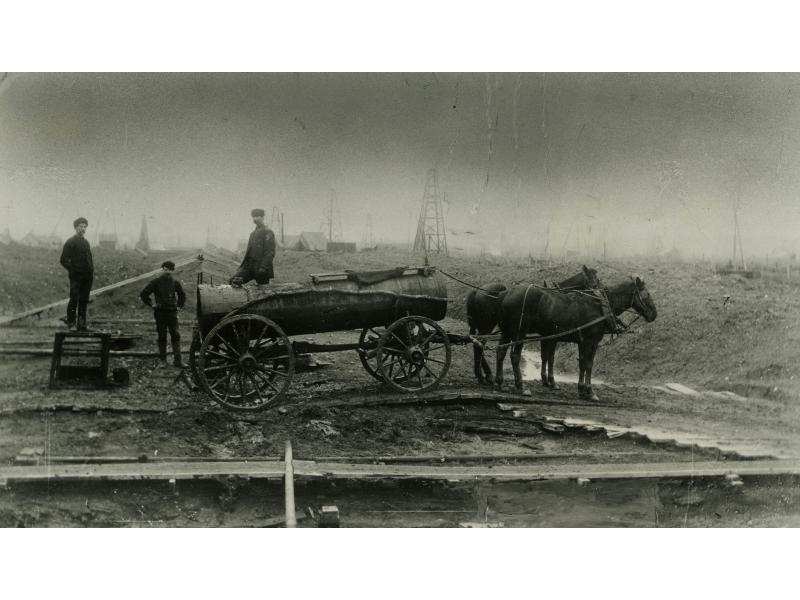 An oil tank wagon pulled by a team of horses.
An oil tank wagon pulled by a team of horses. 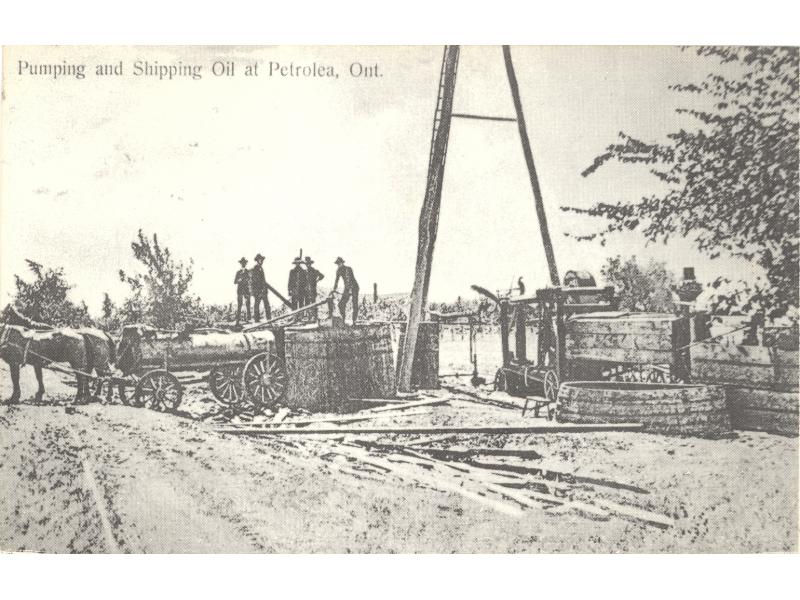 A team of men pumps oil from wooden storage tanks into tank wagons so that the crude oil can be transported to nearby refineries.
A team of men pumps oil from wooden storage tanks into tank wagons so that the crude oil can be transported to nearby refineries. 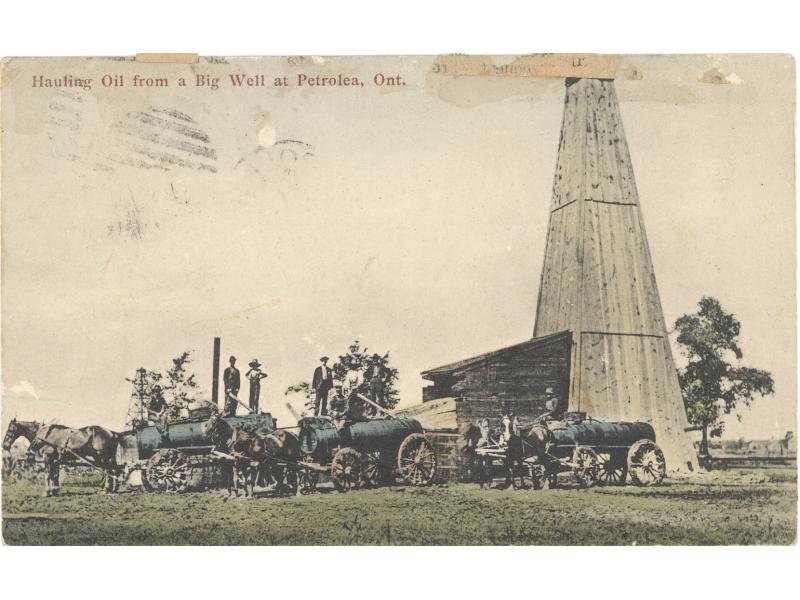 A team of tank wagons ready to haul crude oil to the refineries.
A team of tank wagons ready to haul crude oil to the refineries. 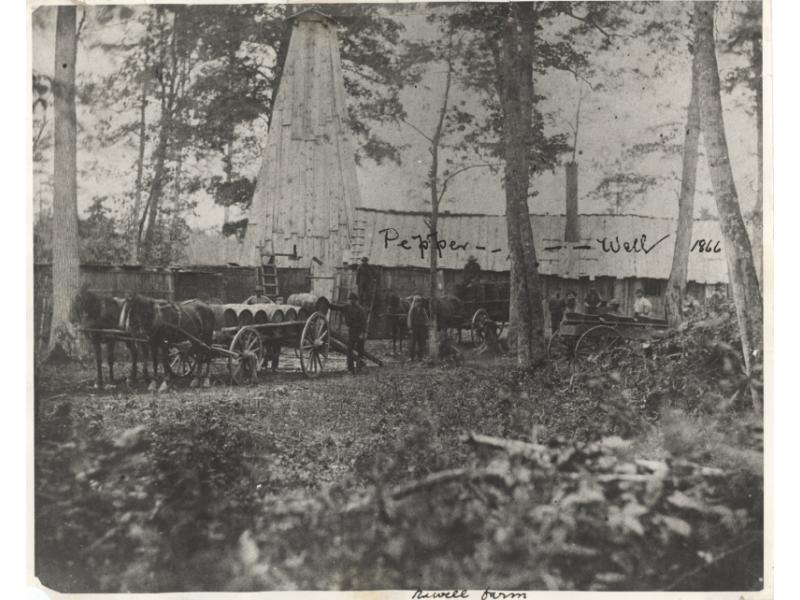 Before tank wagons, oil was transported in wooden barrels which were carried in horse-drawn wagons, as shown in this Bothwell, Ontario oil field.
Before tank wagons, oil was transported in wooden barrels which were carried in horse-drawn wagons, as shown in this Bothwell, Ontario oil field. 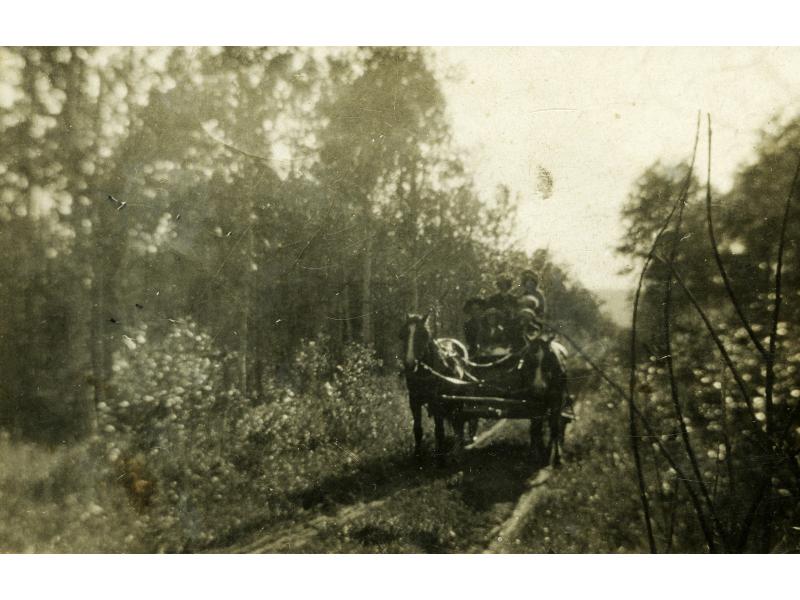 Horses pulled tank wagons along rough clay roads, similar to this one.
Horses pulled tank wagons along rough clay roads, similar to this one. 

Add new comment